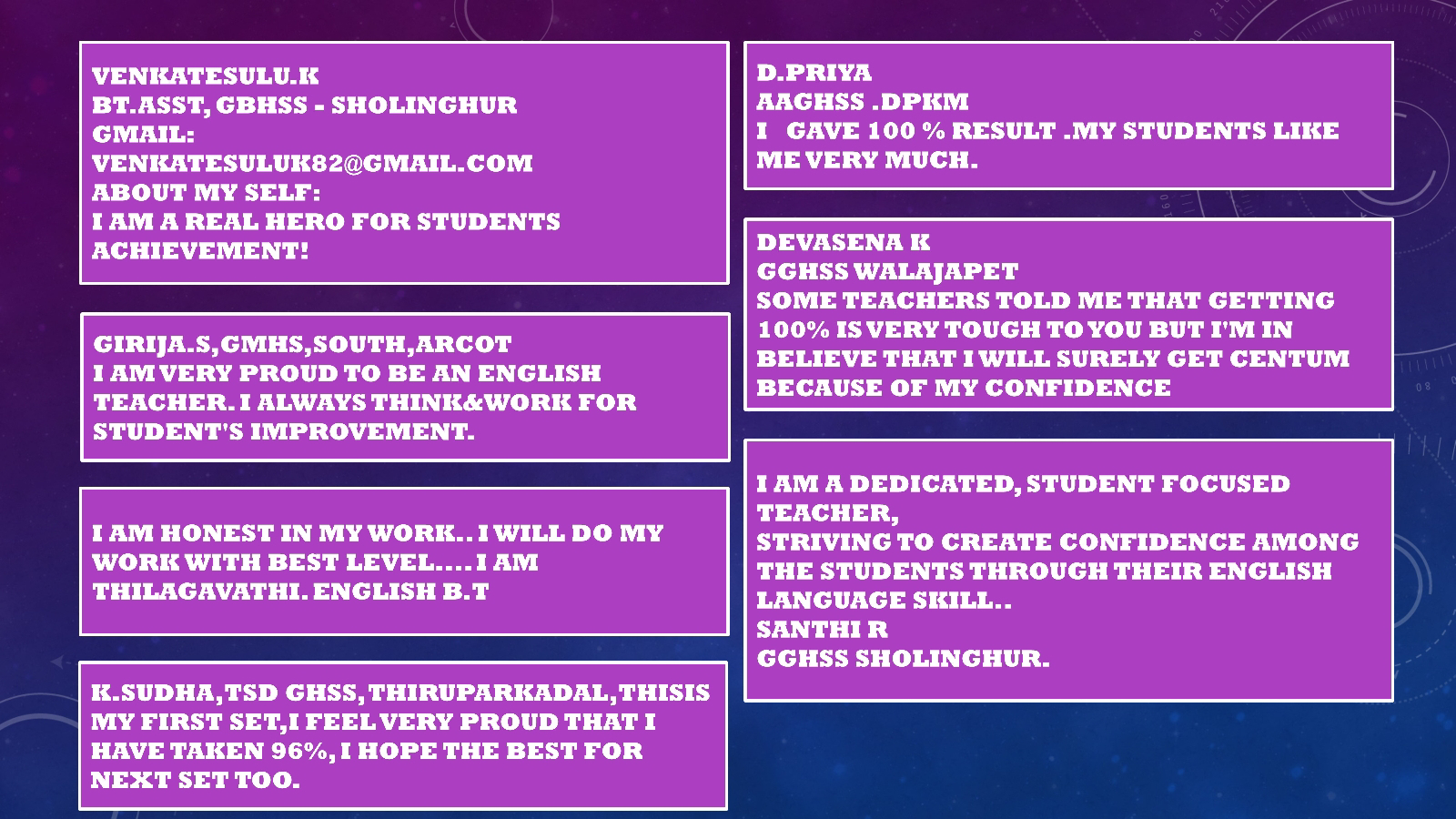ART OF QUESTIONING
ART OF QUESTIONING
Tuesday, 29 July 2025
Monday, 28 July 2025
Monday, 27 November 2023
Friday, 9 June 2023
Thursday, 8 June 2023
Monday, 2 March 2020
SSLC ENGLISH 2020 -A SMALL INTRO
PTA QUESTION BANK LINK
PTA ANSWERS LINK
Remember:
Read the question carefully: “What is given?”
Understand: “What is asked?”
Get an idea: “What is expected?
How do I respond?”
Note:
Don’t write with a spelling mistake, when you copy an answer from the question itself.
Attend all the questions (for 100 marks only).
Don’t forget to write the question number for each answer.
Time management is important
ADDITIONAL TOPICS FOR TOPPERS
Vocabulary & Grammar
1. Idioms and Phrases
2. Change the Form (Parts of Speech)
3. Homophones / Confusables
4. Concord
5. Non-Finite
6. Prepositional Phrases
7. Relative Pronoun
8. Articles
9. Modals / Semi-Modals
Skill Based Questions
1. Slogan Writing
2. Draft a speech
3. Article writing
4. e-mail writing
5. Process Writing
6. Message writing
7. Poster Making
8. Pamphlet Making
9. Pie-Chart Questions
KWHLAQ asks the following questions:
- K – What students already KNOW about a topic?
- W – WHAT students want to learn or find out?
- H – HOW they will research or find the information they want to learn?
- L – What students have LEARNED about the topic after taking action?
- A – How will students APPLY the knowledge they’ve learned?
- Q – What QUESTIONS they still have or have thought of as a result of the learning exercise?
Who should use a KWHLAQ chart?
A KWHLAQ chart is useful for both group and independent learning and formative assessment. Teachers and trainers can use this technique to create customized, student-centric lesson plans while still linking to a curriculum or organizational learning goals. Independent researchers can use the model to organize their ideas and keep track of their progress.
Because the KWHLAQ methodology presents information as a sequence of scaffolded steps, it is especially useful for visual, young, and ESL learners.
Why do a KWHLAQ chart?
The KWHLAQ chart is a simple but effective instructional technique which puts the student at the center of inquiry-based learning. In addition to the benefits of the basic KWL Chart, the extended version:
- Provides teachers with valuable information as to what students already know about a given topic (diagnostic assessment).
- Builds collective learning by helping students to learn from each other (peer-to-peer learning).
- Enables teachers to create more enjoyable lesson plans that address the interests, questions, and needs of the students
- Creates interest and curiosity and encourages students to expand their ideas beyond the lesson or training provided in the classroom environment.
- Facilitates a more authentic experience by asking them how they will apply their knowledge.
What I KNOW
Identify what the students already know. Complete before planning and delivery of the lesson.
What I WANT to know
Investigate what students want to know. Reinforce that knowledge gaps are not a deficiency but an opportunity to grow. Complete before planning and delivery of the lesson.
HOW will I find out
Assess strategies, resources, and tools available to help find the answers and create a plan. Complete before research or delivery of the lesson.
What I LEARNED
Information about what the students have learned. Complete during and after delivery of the lesson.
How I will APPLY this knowledge
Develop a list of how they can apply their new knowledge. Complete after delivery of the lesson.
QUESTIONS I still have
Identify questions that remain and new questions that arose as a result of the exercise. Complete after delivery of the lesson.

Tuesday, 24 July 2018
Monday, 23 July 2018
Saturday, 21 July 2018
Friday, 20 July 2018
Subscribe to:
Comments (Atom)































































